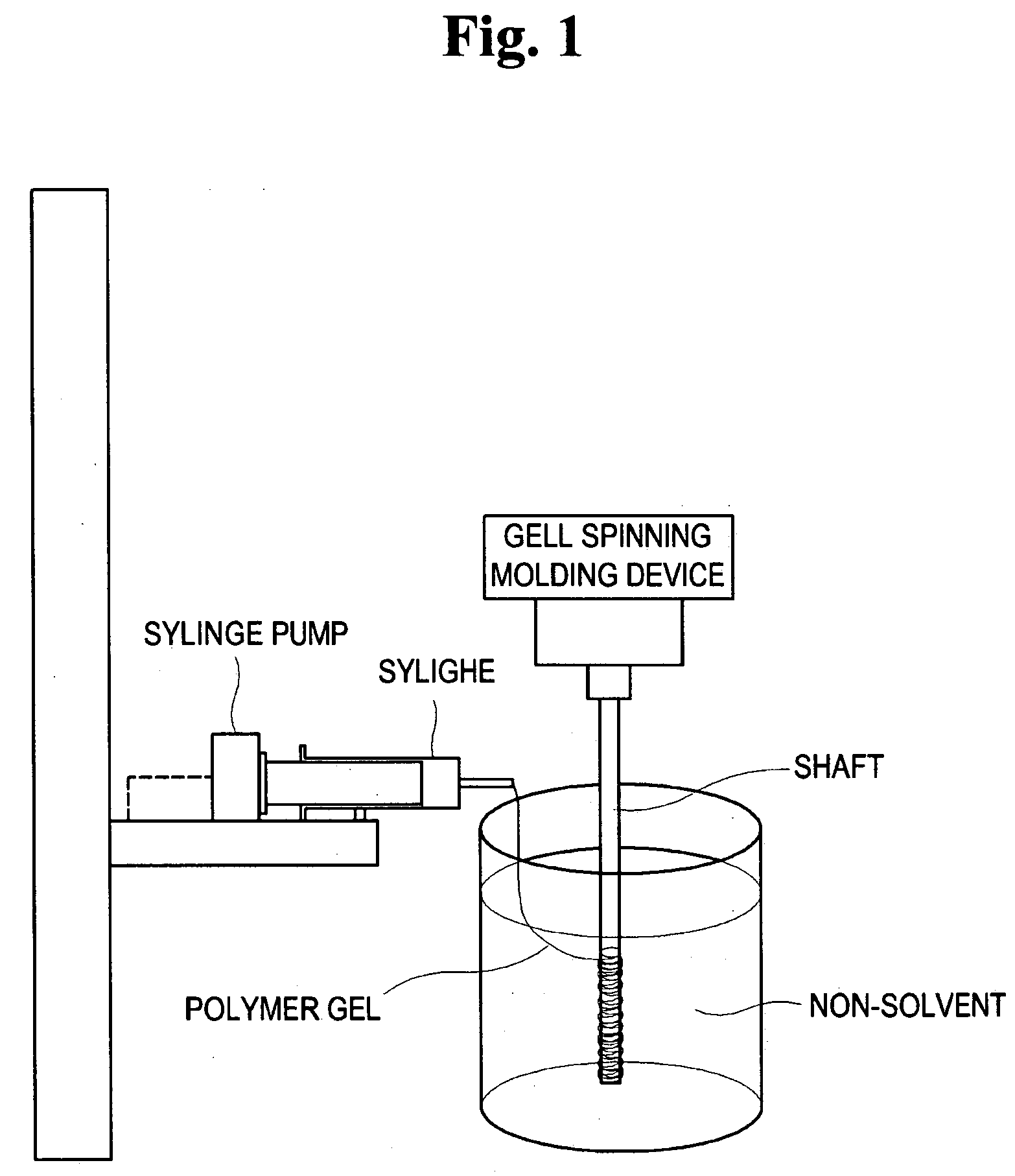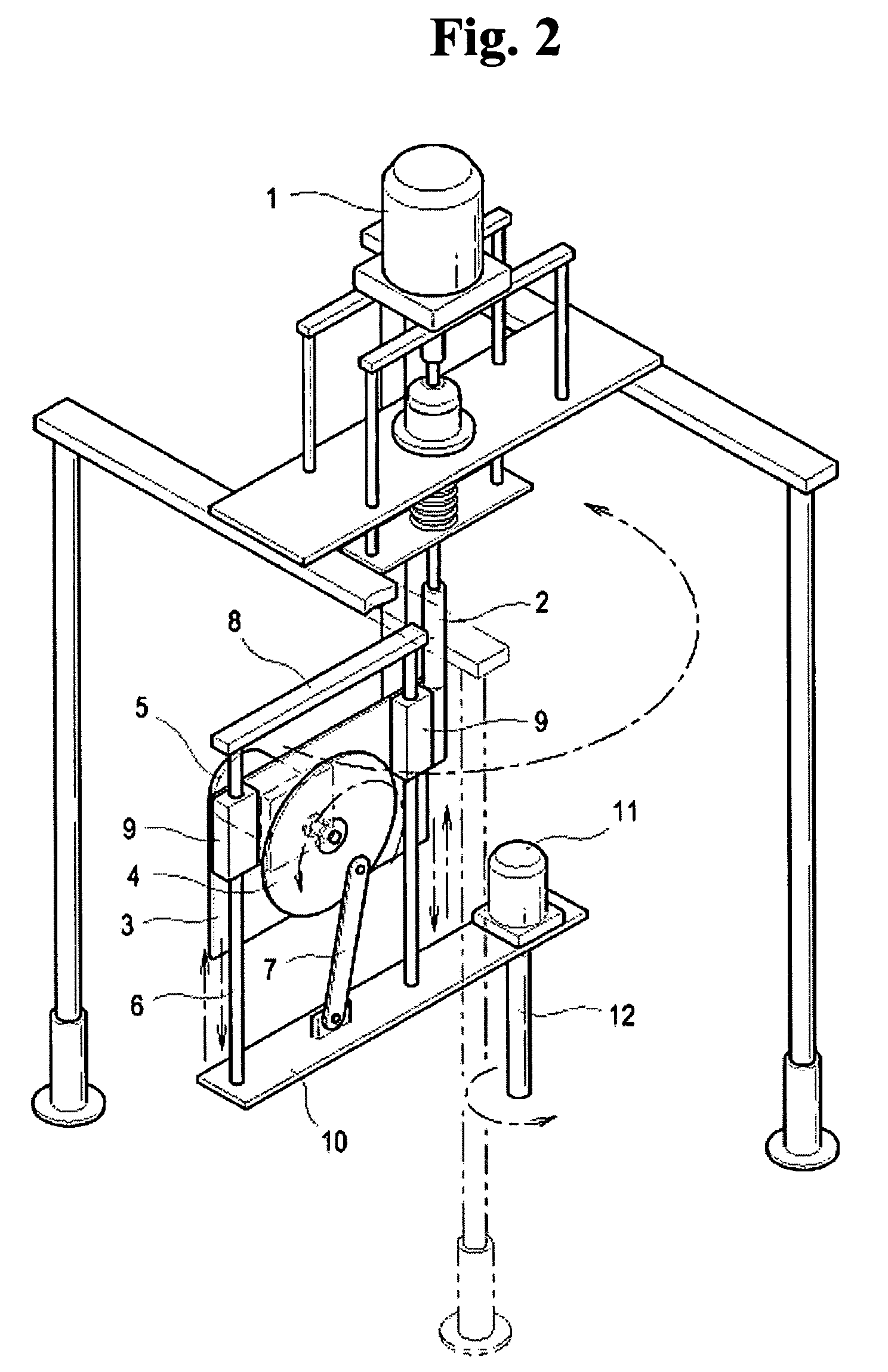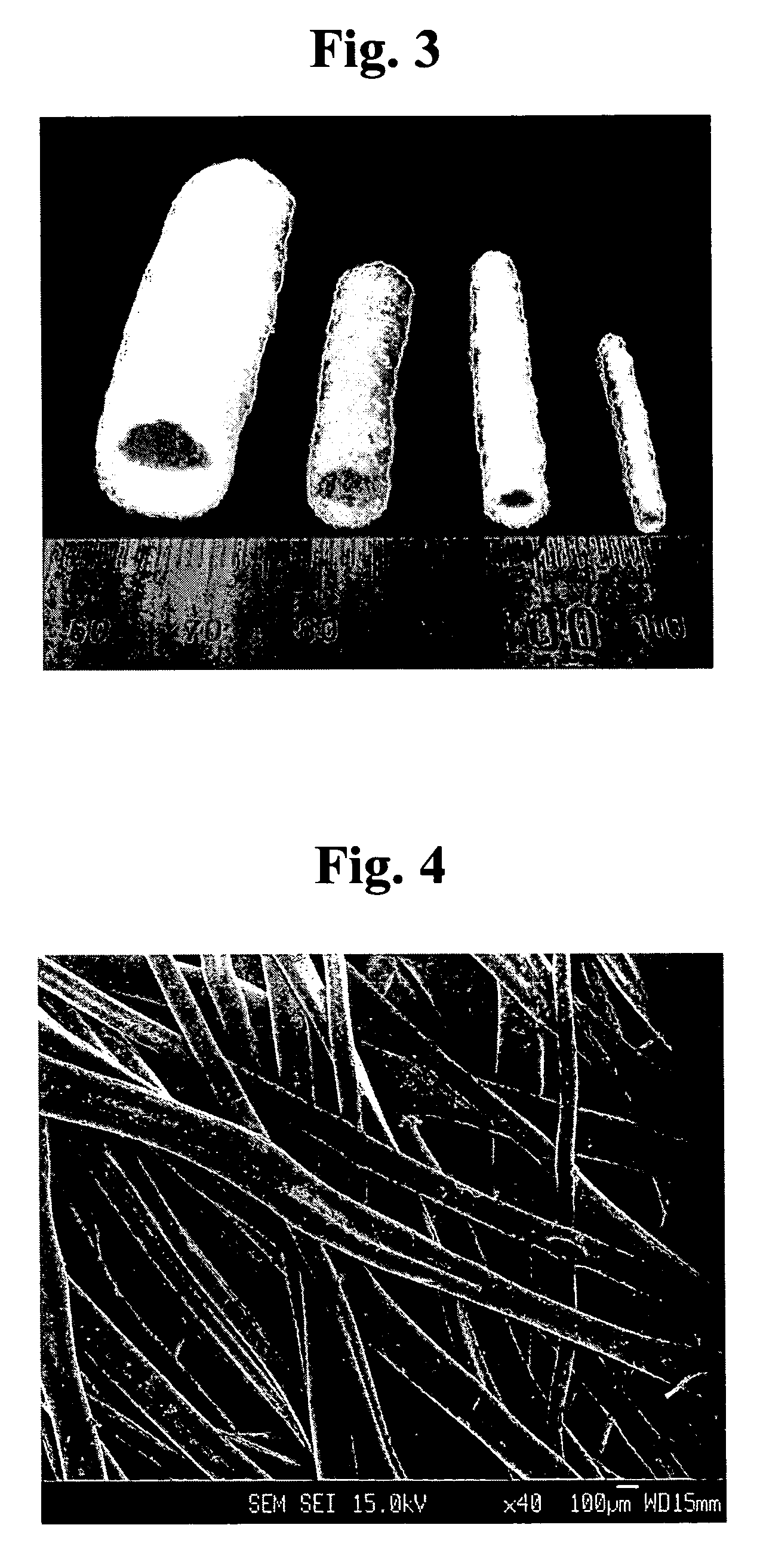Method for preparing porous polymer scaffold for tissue engineering using gel spinning molding technique
a tissue engineering and gel spinning technology, applied in the field of tissue engineering porous polymer scaffolds prepared by the above methods, can solve the problems of inability to achieve three-dimensional cell culture, and inability to achieve a three-dimensional cell culture. , to achieve the effect of high cell seeding and proliferation efficiency, uniform pore size, and high interconnection between pores
- Summary
- Abstract
- Description
- Claims
- Application Information
AI Technical Summary
Benefits of technology
Problems solved by technology
Method used
Image
Examples
example 1
[0045] A polymer solution was prepared by dissolving PLCL (the composition rate of monomers=50:50) having a weight mean molecular weight (Mw) of 340,000 in chloroform at a final concentration of 10% w / v. It was then poured in a syringe. A molding device (shown in FIG. 2) was installed at a container having 5 L of mixed solvent of methanol and hexane (“non-solvent”) to soak a shaft in the non-solvent. The shaft was then operated to perform rotation, revolution and up-and-down motions at a rate of 100 rpm, 150 rpm and 100 rpm, respectively. At this time, four different types of cylindrical shafts having diameters of 10, 6, 5 and 2 mm, respectively, were employed. The polymer solution in the syringe was subjected to falling spinning at a rate of 10 Ml / min with a syringe pump in the non-solvent, which is in rotation due to the shaft. The spun polymer solution was phase-separated into polymer gel fibers. Simultaneously with the phase-separation, the polymer gel fibers wind around the sha...
example 2
[0048] The porous polymer scaffold was prepared according to the same method as described in Example 1, except that a polymer solution was prepared by dissolving PLLA having a weight mean molecular weight (Mw) of 150,000 in chloroform at a final concentration of 5% w / v, methanol was employed as a non-solvent and a reel-shaped shaft was employed. As a result, the sheet type porous polymer scaffold having 32 mm in width and in length and and a thickness of 2 mm was prepared, as shown in FIG. 8.
[0049] The diameter of each fiber constituting the porous polymer scaffold prepared above ranges from 50 to 100 microns, while its pore size ranges from 50 to 150 microns. Further, its porosity, which was measured by a mercury injection pore measuring instrument, ranges from about 60 to 70%. Also, the surface of the porous polymer scaffold was observed with a SEM. As can be seen from FIG. 9 (40× magnification), it was confirmed that the porous polymer scaffold of the present invention is compos...
PUM
| Property | Measurement | Unit |
|---|---|---|
| porosity | aaaaa | aaaaa |
| pore size | aaaaa | aaaaa |
| thickness | aaaaa | aaaaa |
Abstract
Description
Claims
Application Information
 Login to View More
Login to View More - R&D
- Intellectual Property
- Life Sciences
- Materials
- Tech Scout
- Unparalleled Data Quality
- Higher Quality Content
- 60% Fewer Hallucinations
Browse by: Latest US Patents, China's latest patents, Technical Efficacy Thesaurus, Application Domain, Technology Topic, Popular Technical Reports.
© 2025 PatSnap. All rights reserved.Legal|Privacy policy|Modern Slavery Act Transparency Statement|Sitemap|About US| Contact US: help@patsnap.com



